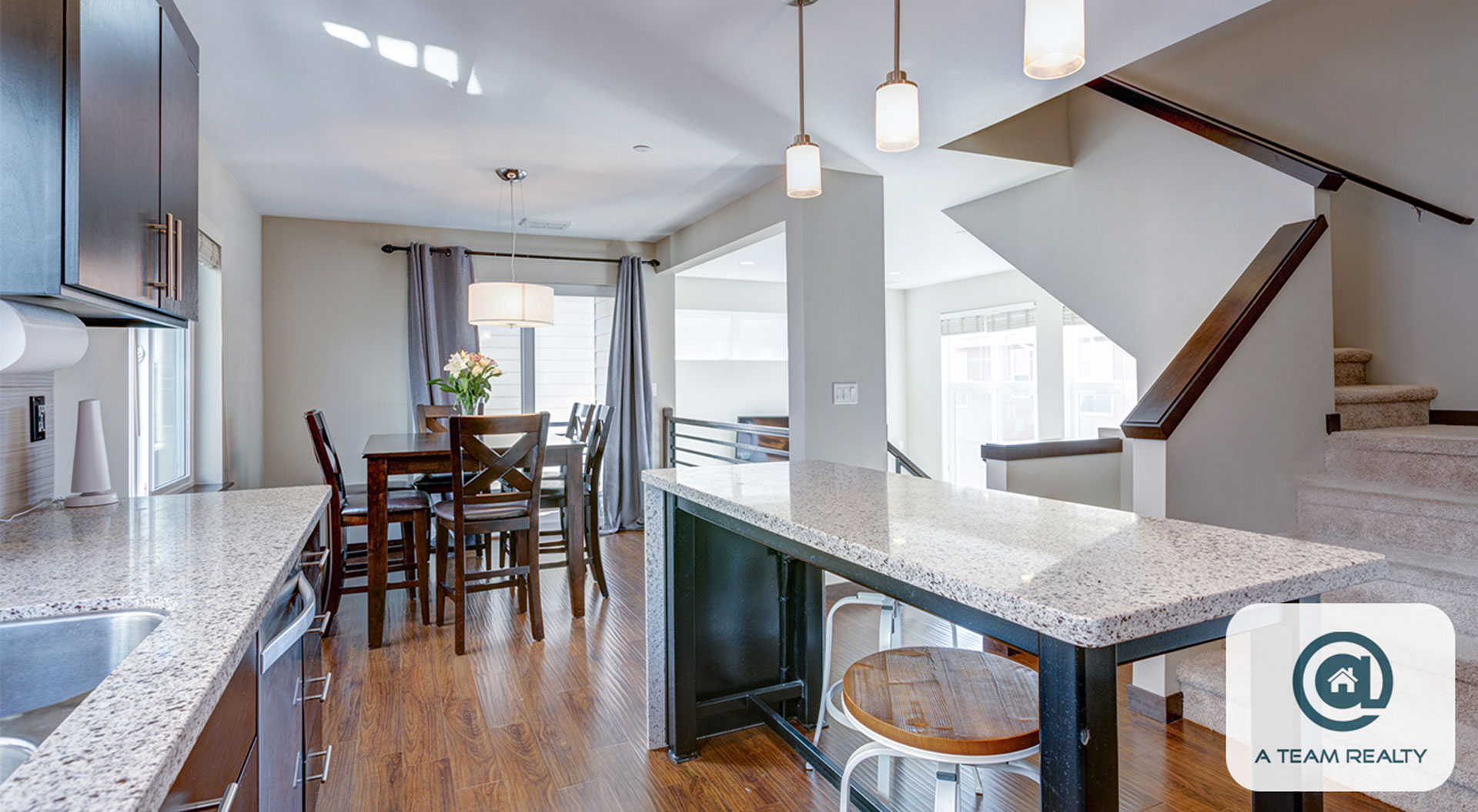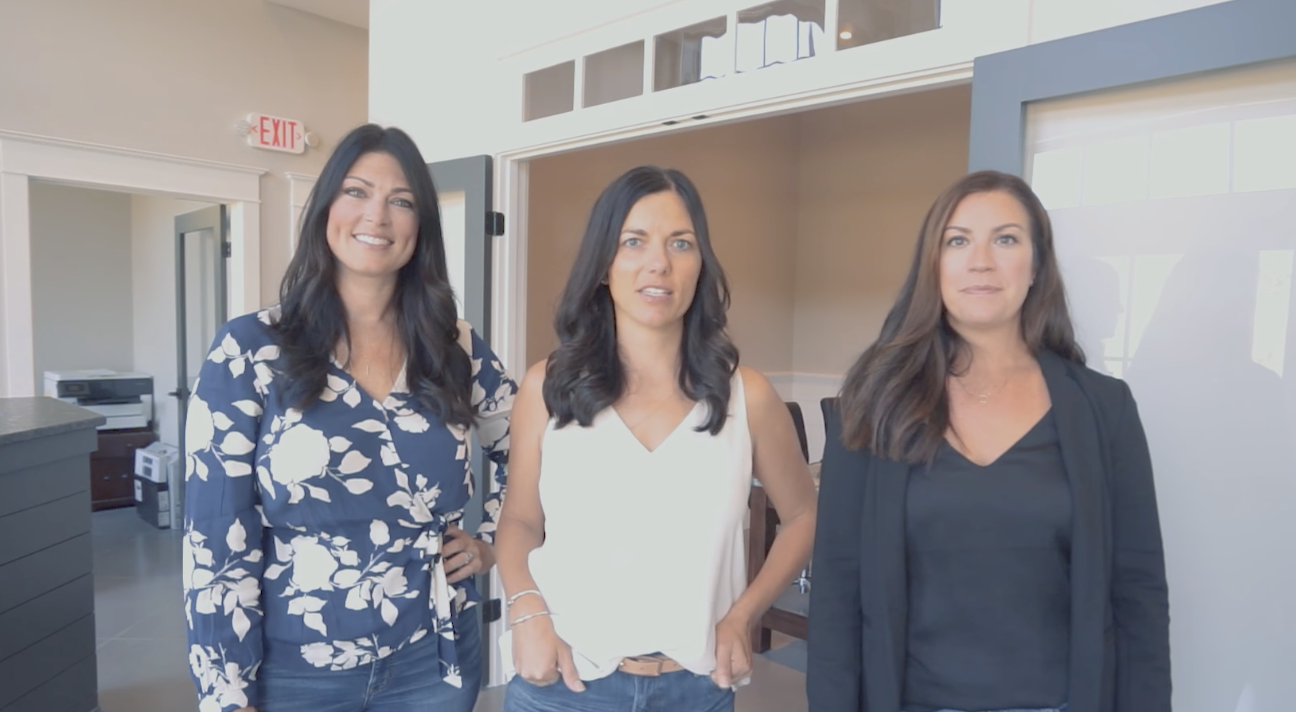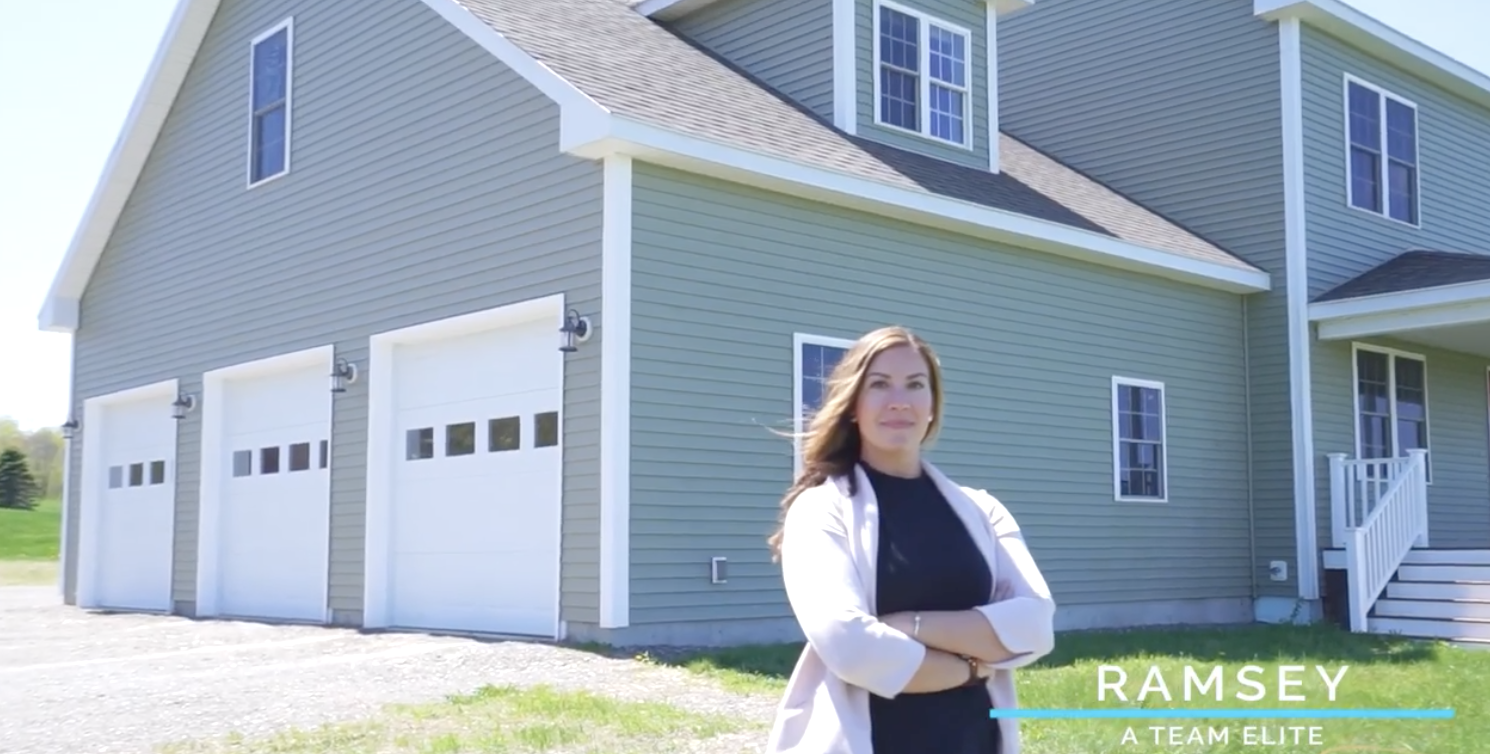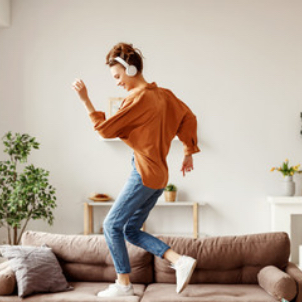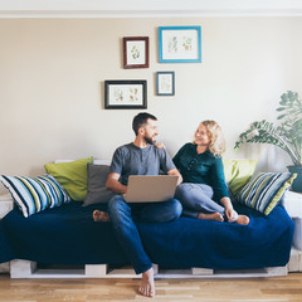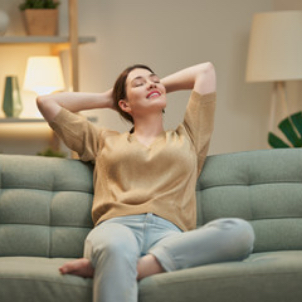Essential Home Staging Tips to Sell Your House Fast
Essential Home Staging Tips to Sell Your House Fast
Have you ever felt like you were playing a game of Tetris, trying to fit all your belongings into boxes while making rooms look tidy and inviting? You're not alone.
Imagine if I said to you there was a hack for this craziness?
Welcome to the world of home staging - it's more than just boxing and unboxing. It's about painting a picture so potential buyers can see themselves living in your house.
This isn't some 'one-size-fits-all' approach though! It takes clever decluttering, lighting tricks, smart color choices, and even understanding who will want to buy your house. We'll delve deep into each of these aspects!
Ready to uncover the secrets behind those stunning property photos? Let's begin! Here is a guide to get your house ready to sell!
Turn your Maine real estate dreams into reality with the A Team Realty - contact us today!
The Power of Home Staging
Staging a home isn't just about arranging furniture or sprucing up the décor. It's a technique to highlight your home's strengths and downplay its weaknesses.
It is about creating a peaceful slate upon which a potential buyer imagines their life - eating breakfast in the sunny kitchen, watching movies in a comfortable family room, organizing tools in the tidy garage.
Why Stage Your Home?
Is it worth the effort to stage my home? According to a survey by the National Association of Realtors, 83% of buyers' agents stated that staging made it easier for buyers to visualize the property as their future home.
Furthermore, the same survey found out something even more interesting - staged homes typically sold faster and at higher prices compared to non-staged ones. That means staging could help you get more value from your sale.
A Professional Touch Makes A Difference
We've established that staging works, but what makes professional staging stand out? Let me tell you: professionals know how to strategically direct buyer’s eyes towards features worth highlighting while subtly diverting attention away from less appealing aspects.
Finding Balance in Home Staging
A key part in effective staging is striking balance between lived-in cozy and clean minimalist aesthetic. This delicate equilibrium lets potential buyers imagine themselves living there without getting distracted by too much clutter or personal items around them.
The Science Behind Effective Staging Strategies
|
Description |
|
|
Clean & Declutter: |
This can give the effect of having a bigger area, making it seem larger than its true size. |
|
Neutral Colors: |
Neutral colors appeal to a wider range of buyers and allow them to visualize their own belongings in the space. |
|
Lighting: |
Good lighting can really change the way we see a home. It's all about setting the right mood and highlighting key features. |
The Role of Decluttering in Home Staging
To kickstart the home staging process, decluttering is the first and most critical step. By eliminating excess items and personal effects from each room, we allow potential buyers to visualize their own belongings in the space. (Of course, if your house is not clean, cleaning your house is the first step. Selling a dirty house is very hard.)
Think about it: when you walk into a cluttered room, your eyes don't know where to focus first. Trinkets on the wall, bins of sports equipment spilling onto the floor, a broken fan in the bedroom, piles of mail on the desk - NO! But when you step into a well-organized space with plenty of breathing room for furniture and décor elements, the room becomes more of a canvas to imagine your life there with your furniture, your artwork, your dog bed!
Why Neutral Colors Work Best in Home Staging
Now for color choices – ever noticed how staged homes often lean towards neutral palettes? There’s a reason for choosing neutral colors.
In fact, psychological research has found that colors can significantly impact our emotions. So by using shades like white or beige on walls, furniture, and accessories help us create a calming environment that lets potential buyers project their own style preferences onto the property.
And remember folks: although we might have strong opinions about hot pink kitchen tiles or lime green living rooms - not everyone shares our tastes. A shocking color in your living room may be too personal, too bold, too shocking for a potential buyer to overwrite. This is why neutrals are always recommended as they appeal to a wider range of people. Avoid pink, purple, red, neon and pastels. They are simply too harsh.
Important Takeaway:
Home staging is a powerful tool to attract buyers and sell your house quickly. Clean your house or have it professionally cleaned. Then, declutter your rooms to let potential buyers envision their own items in the space. Use neutral colors for wide appeal, as they allow buyers to project their own style preferences onto the property. Home staging can significantly speed up your selling process and possibly increase the price of your home.
Lighting and Space Illusion Techniques in Home Staging
Lighting is important in a home and natural light is your best friend. A dark room may feel cozy to you but to someone else, it feels cramped and depressing.
You'll want to let as much natural light into the property as possible. Open the blinds and curtains wide (and make sure those windows are super clean while you are at it!). If something is blocking the window inside, move it. If branches or objects are blocking a window outside, prune the tree/shrub or move the object. If natural light isn't enough, don't be afraid to use artificial sources too. But make sure they enhance rather than overpower the space.
After you have maximized all natural light sources and you are are looking at lamps and overhead lighting. Unless you are in the kitchen or bathroom, you do not need bright lights. Think about toning it down with softer bulbs in floor or table lamps.
Another trick to increase light and for making spaces seem larger is through mirrors. It's not magic—it's all about optical illusions.
A strategically placed mirror can reflect both natural and artificial light around a room, making it feel more spacious and inviting. Do not overdo it with mirrors though.
The Art of Lighting in Home Staging
In staging a home for sale, consider each room individually when planning your lighting strategy. Each area may need different types of lights, like task lights for workspaces or accent lights for showcasing artwork or architectural details. Kitchens and bathrooms require brighter lights, bedrooms need reading lights easily accessible from the bed.
Pendant lamps or chandeliers are great choices because they add character while providing ample brightness. Having these on dimmer switches is even better - most people do not want their dining room to look like an operating room.
Creating an Illusion of More Space with Mirrors
To create the illusion of more space using mirrors, try positioning them opposite windows or bright walls. This way, they bounce back light into the room, effectively increasing its size.
But remember: bigger isn't always better when it comes to mirrors. Smaller ones grouped together can have just as much impact and avoid overwhelming the space.
One trick is to put a mirror in the entryway to a home. As a potential buyer walks in, they literally see themselves in the home!
Combining Lighting and Mirrors for Maximum Impact
To maximize your home staging efforts, consider combining both techniques. The interplay of lighting and mirrors can make a small room feel more spacious and well-lit. By doing so, you create an inviting atmosphere that potential buyers will find hard to resist.
In summary, strategic use of lighting paired with clever placement of mirrors is an effective way to enhance the perceived size and appeal of a property.
Important Takeaway:
Make your home shine bright and appear larger to attract potential buyers quickly. Allow plenty of natural light in, supplement with artificial lighting where needed, and use mirrors strategically to create a sense of spaciousness. It's not just about brightness—it's also creating an inviting atmosphere that people can't resist.
The Importance Of Curb Appeal In Selling Your House Fast
While interior aesthetics play an integral role in selling your house fast, do not forget the exterior. After all, first impressions matter. Just like a book is often judged by its cover, homes are frequently evaluated based on their exteriors.
Let's go outside. Walk around your property. Pretend you don't live there and look at it with fresh eyes. What catches your eye? Is it a tidy row of boxwoods or a broken bicycle by the shed? Is it a newly cut lawn or a broken planter on the patio? Where your eye lands is where a buyer's eye will land, too, for better or worse.
Whether it’s power washing your siding or planting colorful flowers in front yard planters - every bit of effort counts when it comes to increasing curb appeal and attracting potential buyers. A forgotten and overgrown garden sticks in your mind. If you don't have the time or the funds to put in plants, make the effort to at least clean out the debris and dead plants, getting it as close to a blank canvas as possible.
Remember: home staging is about telling a story that helps prospective buyers see themselves living happily ever after in this new space, including envisioning themselves outside on the deck or front porch or pulling into the driveway.
Curb Appeal: More Than Just Looks
The truth is that when someone comes to look at your property, they are inspecting it and judging it. How well the property is maintained outside has an implication for how well it is maintained inside. An unkempt lawn might suggest interior neglect —a big red flag for the buyer.
To increase curb appeal, do these tasks yourself or pay to have them done: mow the lawn, clean gutters, trim hedges, repair the fence, put any object that isn't serving a purpose neatly inside a shed or garage. This not only enhances attractiveness but also communicates care and attention - another big tick box for many buyers.
Incorporating Personality While Appealing To Masses
If your time and financial budgets allow, consider professional landscaping ideas, attractive outdoor lighting fixtures, new house numbers or even an interesting mailbox. These improvements can add unique character to your home's exterior, while still appealing to a wide range of tastes.
Remember though, too much personality can be off-putting. Stick with neutral color schemes and avoid over-the-top decorations that may deter rather than attract potential buyers. When in doubt, less is better.
Seasonal Curb Appeal
Seasonal changes should be reflected in the property’s exteriors. If you have any sort of decorations or planters, they should reflect the season. A couple of pumpkins on the steps in the fall, a lush planter of flowers in the summer, a tidy and simple evergreen wreath in the winter all signal to a buyer that you are taking a regular interest in your home. If you don't have time to decorate, that is okay. Just make sure your Christmas wreath is not up in July or you have a half-dead flower planter on your back patio. Again, when in doubt, less is more!
Important Takeaway:
Curb appeal is your home's first impression, and it plays a crucial role in attracting potential buyers. It’s more than just aesthetics—it reflects how well you've cared for the property over time. Small changes like cleaning walkways or planting flowers can make big impacts.
Targeted Staging for Demographic Appeal
Understanding your potential buyers is the secret sauce in home staging. Let's get into why that matters.
The Importance of Buyer-Centric Staging
Do you have a target buyer? Depending on your aim, you can focus your staging accordingly. For example, a young, trendy couple will likely have different tastes compared to empty-nesters looking for their retirement haven.
If we're talking about attracting millennials, think minimalist design and eco-friendly features. But if empty-nesters who are nearing retirement is the target demographic, cozy spaces and accessibility should be on top of your list.
Digging Deeper into Your Target Market
To nail targeted staging, you need more than just assumptions or stereotypes about certain demographics. It requires real data-driven insights into buyer preferences - like these ones provided by The National Association of Realtors.
Adapting Home Staging Strategies per Demographic Group
We know that effective home staging isn't one-size-fits-all; it needs customization based on demographic appeal.
For instance:
- A family with kids might appreciate a well-designed playroom area – imagine colorful bins full of toys neatly organized or a decluttered eating area for a larger number of people to casually and easily dine.
- An elderly couple will likely value safety features such as non-slip floors and handrails in bathrooms more than chic aesthetics alone.
Selling To Millennials? Here’s What You Need To Know
Fascinated by smart homes? So are they. Make sure high-tech amenities take center stage when showcasing your property.
Incorporate a workspace that speaks of productivity and comfort. And don't forget about eco-friendly features - they're the green generation, after all.
What About Baby Boomers?
Comfort is king for this demographic. Emphasize ease-of-living aspects like ground-level master bedrooms or easy-to-maintain yards.
Baby boomers are nostalgic by nature as well. You can enhance this feeling with soft music, a kitchen table already set, a family room with cozy lighting and soft rugs all bring a sense of family and together-ness, which is very important for a lot of baby boomers.
Virtual Staging in the Digital Age
The world of real estate has taken a digital turn, and virtual staging is leading the charge. It's an innovative method where designers use computer technology to furnish and decorate a property. They literally add virtual sofas and rugs to the photos of your house online!
This new-age solution lets potential buyers visualize how their future home could look without stepping foot inside. They can see the space dressed up with stylish furniture and décor, all added digitally to listing photos. This is definitely a time and money saver, especially in an era when potential buyers often look at photos online before visiting.
Rising Popularity of Virtual Staging
The trend of virtual staging is gaining popularity due to its economical nature when compared with physical staging. No need to buy or transport new furniture.
Let's imagine you will be moved out and the house will be empty by the time it goes on the market. A professional stager who brings in actual décor to your empty home might ask for thousands upfront while virtual stagers often charge less than $100 per room. This affordability factor gives more sellers access to high-quality staging services that were once out-of-reach.
An empty house can be hard for buyers to connect with as they struggle picturing themselves living there. That’s where virtual staging steps in; it bridges this gap between imagination and reality.
Digital designs help them understand scale, layout possibilities, or simply get excited about how cozy their new lounge area could be. So if you're looking at selling fast, going digital may just do the trick.
DIY versus Professional Home Stagers
Is it worth the investment?
Hiring a professional home stager can take some of the pressure off your shoulders because they have expertise in creating an appealing environment that can attract potential buyers and boost property value. At the time of a house sale, most sellers are physically and emotionally exhausted and sprucing up a place they are about to leave does not appeal!
What You Get When You Go Pro
A pro stager knows how to maximize space, optimize lighting, and use neutral colors strategically - all things proven to make homes more enticing on the market.
Budgeting for a Pro Stager
The cost varies depending on factors like size of your home and extent of services needed. But remember: this investment could help get a higher selling price faster.
Diving into DIY Home Staging
If budget constraints rule out hiring professionals, don't fret. With some effort and creativity, you can stage your own home successfully too.
Remember the rules of DIY Home Staging:
- * Cleanliness comes first: A tidy home looks larger and more inviting. Then, decluttering is the name of the game. Think about a hotel room and use that as your goal.
- * Leverage Lighting: Natural light makes spaces feel airy while well-placed lamps add warmth.
- * Use Neutral Colors: They appeal to wider range of buyers.
Note: While going the DIY way requires time and energy upfront; it offers cost savings which might be crucial when selling.
Remember that regardless if you choose professional assistance or decide on doing it yourself – effective staging has significant impact in making sure potential buyers can see your home as their future one.
Keep in mind that what matters most is creating an environment where potential buyers can visualize themselves living happily ever after. So, start now! Mow the lawn, open the curtains, and put on some soft music!
Important Takeaway:
Staging Your Home: Professional vs. DIY: Hiring a professional stager can ease your stress and add value to your home, but if budget is tight, don't worry. With effort and creativity, you can stage it yourself too. Cleanliness, good lighting and neutral colors are key elements of successful staging - whether done by pros or by enthusiastic homeowners like yourself.
FAQs in Relation to Home Staging Tips to Sell Your House Fast
How can I market my house to sell fast?
Boost your marketing game with professional photos, virtual tours, and social media promotion. Make sure you price it right.
What is the 3 foot 5 foot rule in staging a home?
The 3-5 feet rule refers to arranging furniture and décor at least three but not more than five feet apart. It enhances flow.
What is the most important thing a seller must do when staging their home?
The most critical part of staging? Decluttering. You need to give potential buyers room to envision themselves living there.
What not to do when staging a house?
Avoid personal items like family photos or quirky collections – they distract from imagining oneself in that space. Bright colors on the wall is also a no-no.
Conclusion
So, we've unlocked the secrets behind home staging tips to sell your house fast. Creating a vision is key, right?
You now know decluttering and smart color choices are crucial. They let potential buyers picture themselves in your space.
We've discovered that lighting can transform perception and mirrors work magic by creating illusions of more space.
Curb appeal matters! First impressions really do count when attracting those prospective buyers.
Understanding who will buy your house makes targeted staging effective. Tailor the décor to their lifestyle!
In this digital age, virtual staging is a cost-effective game changer too.
Whether you choose professional help or go DIY depends on time and budget constraints but either way - make sure you stage before selling!
Ready to make your dream of owning a home in Maine a reality? Don't navigate the complex real estate market alone. Trust the A Team Realty, with over 25 years of experience and a commitment to personalized, attentive service. Whether you're buying or selling, we're here to ensure a smooth, stress-free process. Contact us today at (207) 894-8484 or email us at info@ateammaine.com. Let's turn your real estate dreams into reality together!

